Large Dynamic Current Monitoring for UAV Steering Motor Using Twin Nonlinear Shunt
Abstract
:1. Introduction
2. Principle of Operation
2.1. Consistency Analysis of Twin Diode
2.2. Current Measurement Method Based on Twin Diode
3. Implementation
3.1. Consistency Analysis of Twin Diode
3.2. Circuit Implementation
3.3. Analysis of the Current Resolution
4. Testing
4.1. Experimental Setup
4.2. Steady Testing
4.3. Dynamic Current Testing
5. Discussion and Conclusions
Author Contributions
Funding
Conflicts of Interest
References
- Shakhatreh, H.; Sawalmeh, A.H.; Al-Fuqaha, A.; Dou, Z.; Almaita, E.; Khalil, I.; Othman, N.S.; Khreishah, A.; Guizani, M. Unmanned Aerial Vehicles (UAVs): A Survey on Civil Applications and Key Research Challenges. IEEE Access. 2019, 7, 48572–48634. [Google Scholar] [CrossRef]
- Xin, G.C.; Chen, W.L.; Li, J. Research on Security Monitoring and Health Management System of UAV. In Proceedings of the First Symposium on Aviation Maintenance and Management-Volume II; Springer: Xi’an, China, 2014; pp. 631–639. [Google Scholar]
- Man, Q.; Ma, S.; Xia, L.H.; Wang, Y.B. Research on Security Monitoring and Health Management System of Medium-range UAV. In Proceedings of the 8th International Conference on Reliability, Maintainability and Safety (ICRMS 2009), Chengdu, China, 20–24 July 2009; pp. 854–857. [Google Scholar]
- Schacht-Rodríguez, R.; Ponsart, J.-C.; García-Beltrán, C.D.; Astorga-Zaragoza, C.M. Prognosis & Health Management for The Prediction of UAV Flight Endurance. IFAC-Papers OnLine 2018, 51, 983–990. [Google Scholar]
- Rajput, S.S.; Garg, S.C. A High Resolution Autogain Ranging Linear Electrometer Amplifier. Rev. Sci. Instrum. 1996, 67, 609–611. [Google Scholar] [CrossRef]
- Li, Y.L.; Zhao, H.; Zhang, G.J.; Zhang, H. Design and Implementation of High Accuracy Current Measurement Circuit Based on Resistance Sampling Method. In Proceedings of the 2018 13th World Congress on Intelligent Control and Automation (WCICA), Changsha, China, 4–8 July 2018. [Google Scholar]
- Pontes, E.W.; Ferreira, A. A New Method of Current Switching for Linear Wide-range Measurement Systems. IEEE Trans. Instrum. Meas. 2012, 61, 496–504. [Google Scholar] [CrossRef]
- Keysight Technologies, Inc. Keysight N6780 Series Source/Measure Units (SMUs) for the N6700 Modular Power System-Data Sheet. 2017. Available online: https://www.keysight.com/cn/zh/home.html (accessed on 14 July 2020).
- Johnson, K.W.; Brush, I.E.V.; Mctigue, M.T. Oscilloscope System and Method for Simultaneously Displaying Zoomed-in and Zoomed-Out Waveforms. U.S. Patent US2014320145 (A1), 30 October 2014. Available online: http://apps.webofknowledge.com/full_record.do?colName=DIIDW&recordID=2014U09335&log_event=no&search_mode=GeneralSearch&qid=1&log_event=yes&product=UA&SID=7ESE3wi5gPyr9FKH9iV&viewType=fullRecord&doc=1&page=1 (accessed on 14 July 2020).
- Eichler, J.; Novák, M. Simple Seamless Multi-Range Current Measurement for Applications with a Large Dynamic Range. In Proceedings of the 2019 12th International Conference on Measurement, Smolenice, Slovakia, 27–29 May 2019; pp. 83–86. [Google Scholar]
- Acharya, Y.B. A wide range linear electromete. Rev. Sci. Instrum. 2000, 6, 2585–2588. [Google Scholar] [CrossRef]
- Acharya, Y.B. A quasilinear wide range current electromete. Int. J. Electron. 2001, 88, 819–829. [Google Scholar] [CrossRef]
- Fitzgerald, R.; Bergeron, D.E.; Giblin, S.P.; Jarrett, D.G.; Judge, S.M.; Michotte, C.; Scherer, H.; Zimmerman, N.M. The Next Generation of Current Measurement for Ionization Chambers. Appl. Radiat. Isot. 2020, 163, 109216. [Google Scholar] [CrossRef] [PubMed]
- Ericson, M.N.; Falter, K.G.; Rochelle, J.M.A. Wide-range Logarithmic Electrometer With Improved Accuracy and Temperature Stability. IEEE Trans. Instrum. Meas. 1992, 41, 968–973. [Google Scholar] [CrossRef]
- Sobajlc, M.V. Possibility of Simultaneous Logarithmic-linear Direct-current Measurement. IEEE Trans. Instrum. Meas. 1976, 25, 34–43. [Google Scholar] [CrossRef]
- Lookin, N.A.; Rubin, L.S. Precision Nonlinear Low Current Meter. In MECHANICS, RESOURCE AND DIAGNOSTICS OF MATERIALS AND STRUCTURES (MRDMS-2019): Proceedings of the 13th International Conference on Mechanics, Resource and Diagnostics of Materials and Structures; AIP Publishing: College Park, MD, USA, 2019. [Google Scholar]
- Li, B.W.; Wang, L.; Casati, G. Thermal diode: Rectification of heat flux. Phys. Rev. Lett. 2004, 18, 184301. [Google Scholar] [CrossRef] [PubMed] [Green Version]
- Corless, R.M.; Jeffrey, D.J. The Wright Omega Function. In Proceedings of the Artificial Intelligence, Automated Reasoning, and Symbolic Computation, Joint International Conferences, AISC 2002 and Calculemus 2002, Marseille, France, 1–5 July 2002; pp. 76–89. [Google Scholar]
- Singh, L.L.; Gartia, R.K. Derivation of a Simplified OSL OTOR Equation Using Wright Omega function and Its Application. Nucl. Instrum. Methods Phys. Res. Sect. B 2015, 346, 45–52. [Google Scholar] [CrossRef]
- Lawrence, P.W.; Corless, R.M.; Jeffrey, D.J. Algorithm917: Complex Double-Precision Evaluation of the Wright omega Function. ACM Trans. Math. Softw. 2012, 38, 20. [Google Scholar] [CrossRef]
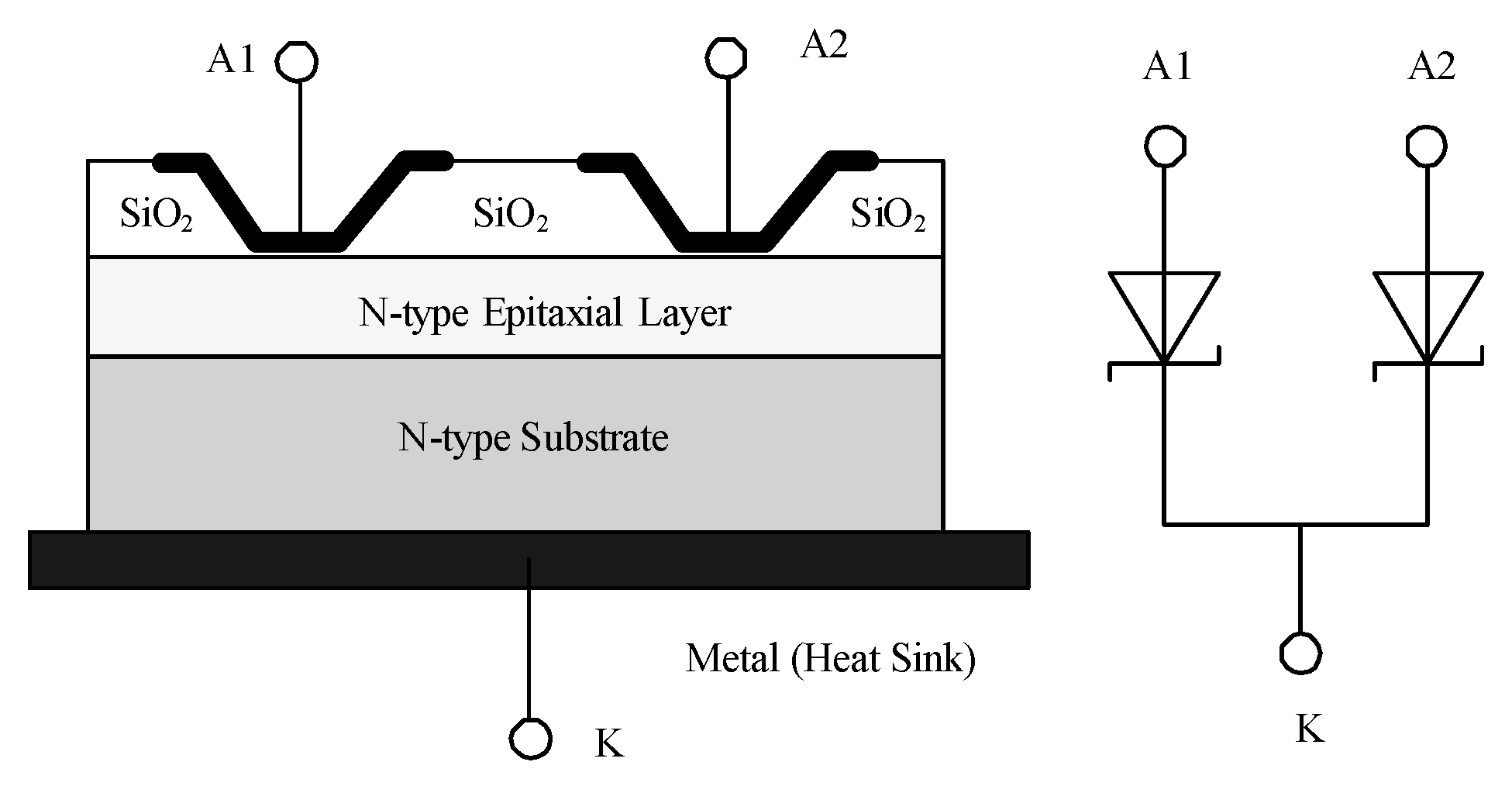


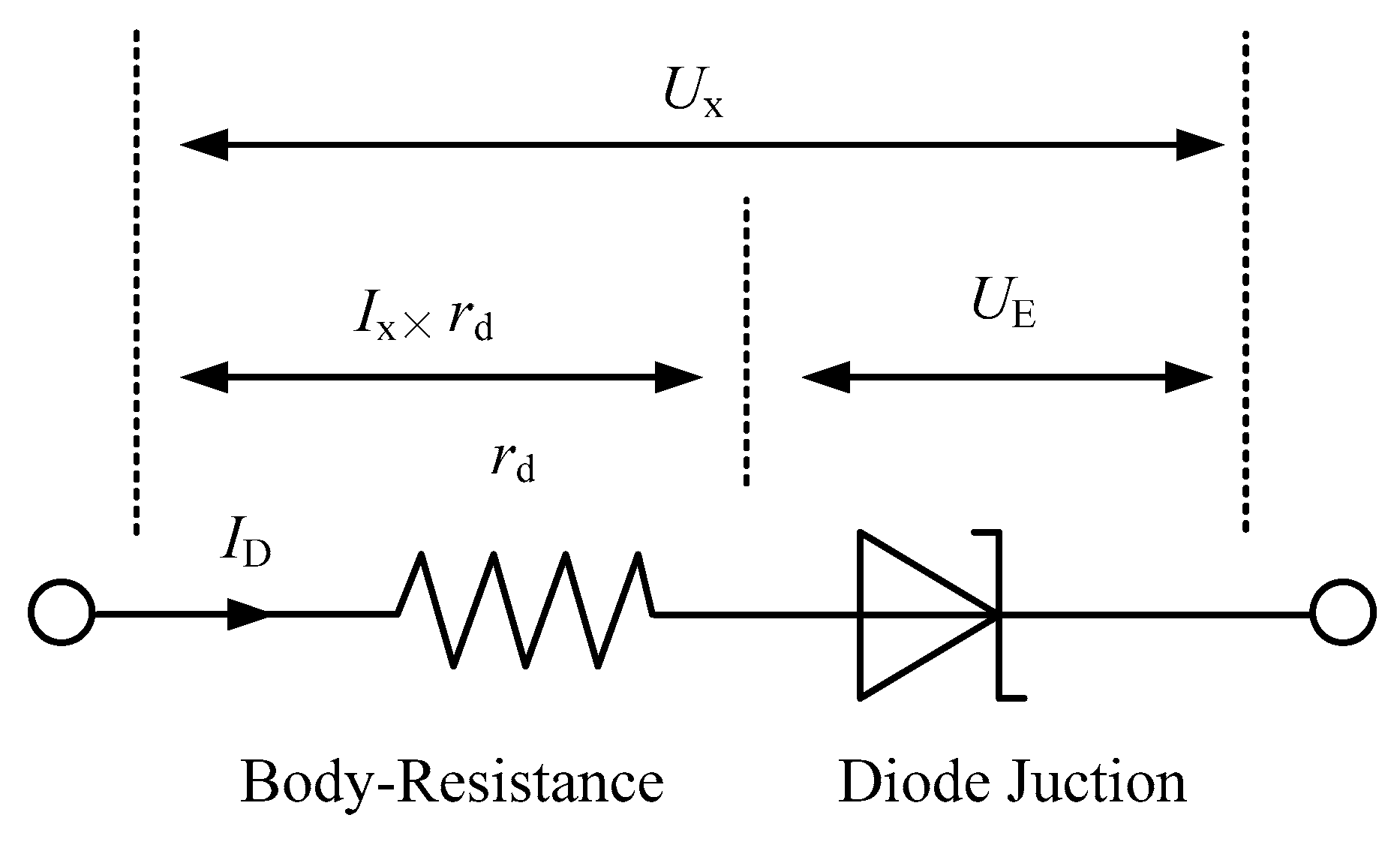
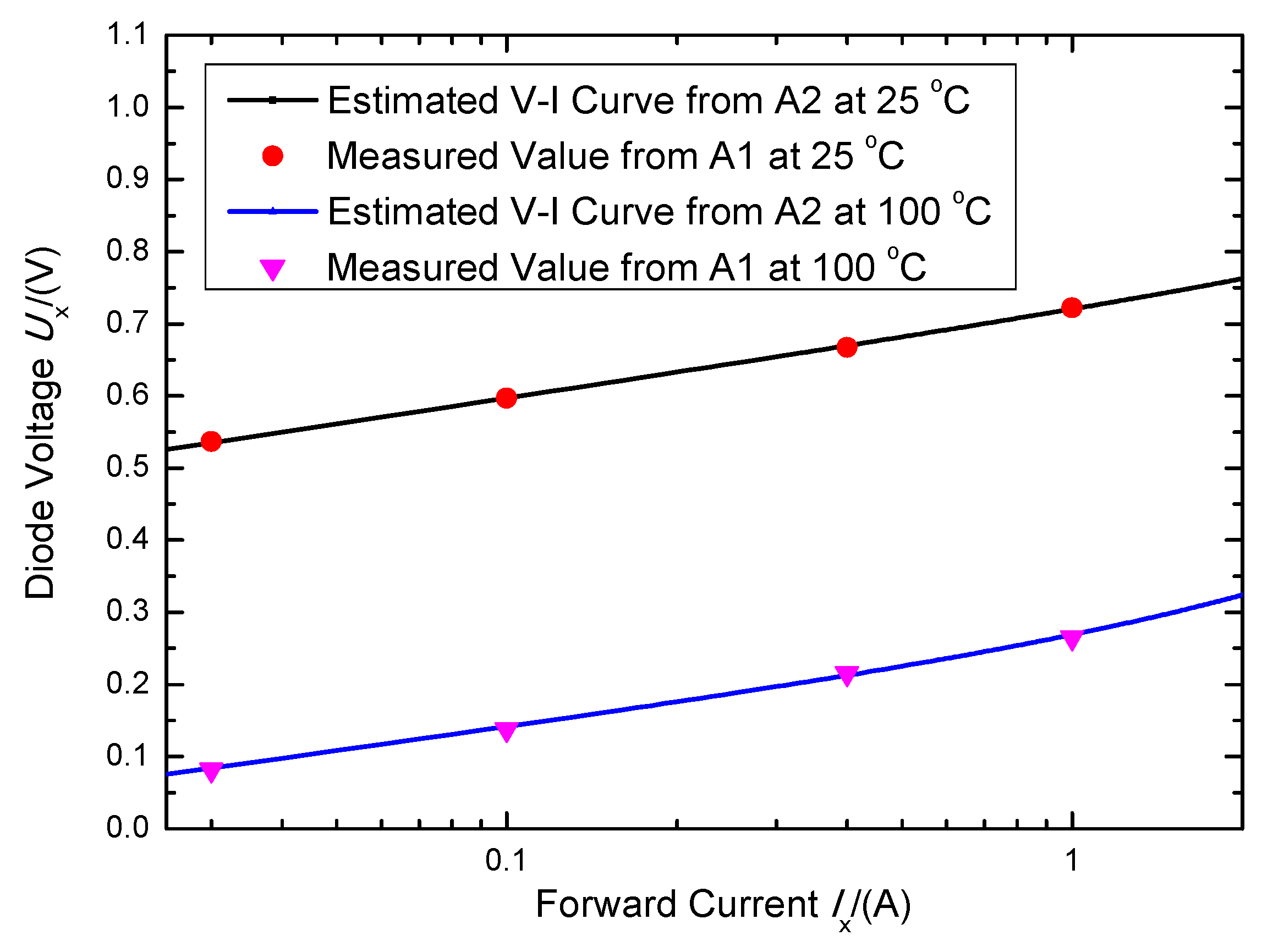
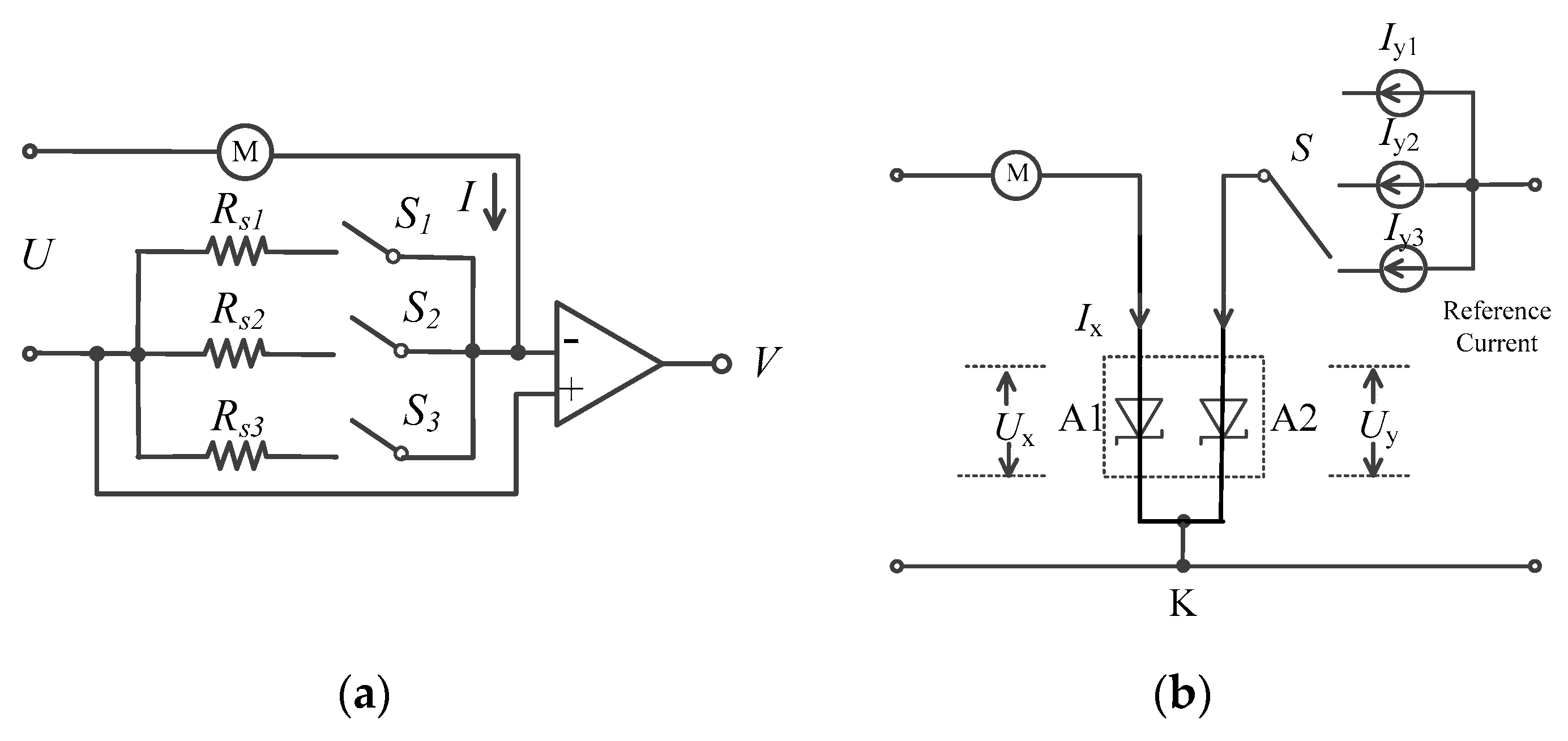



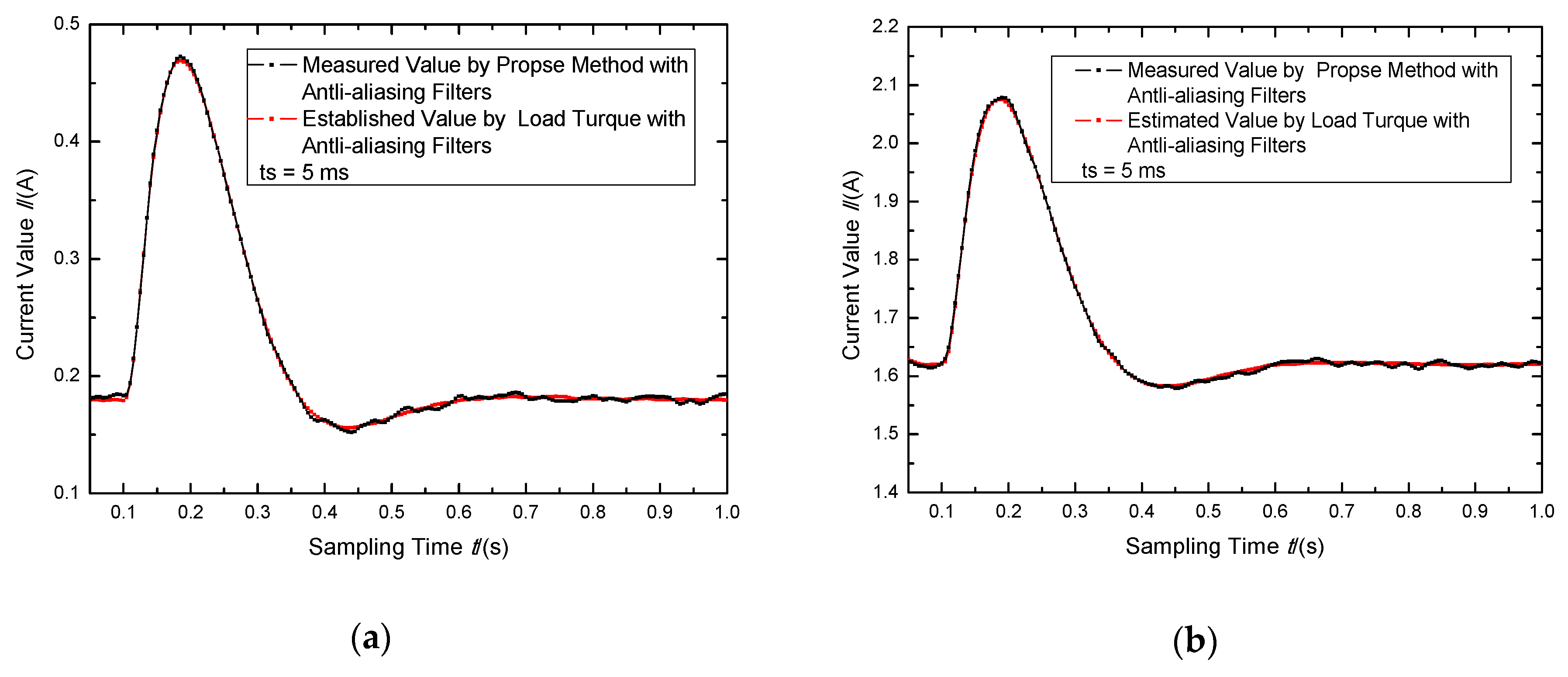
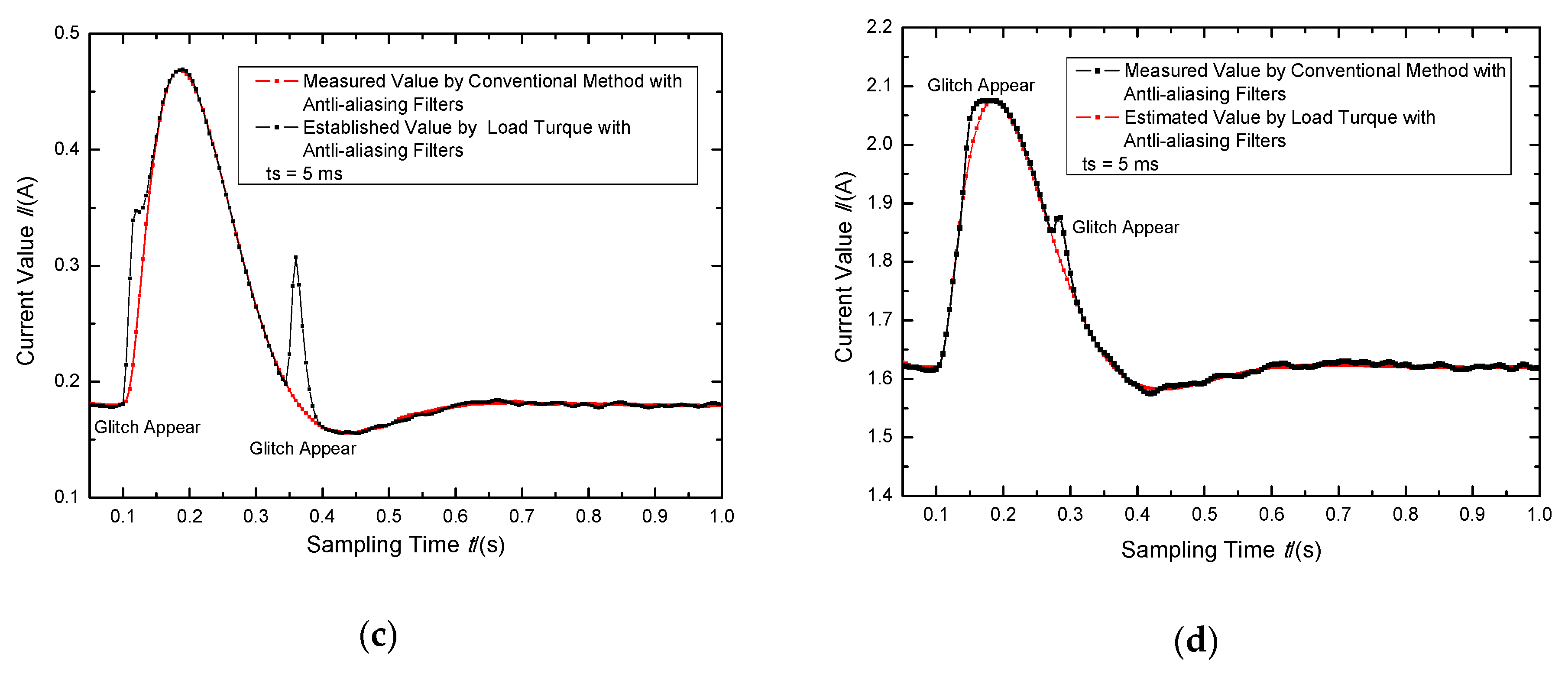
| Ambient Temperature = 25 °C | |||
|---|---|---|---|
| Forward Current | Voltage (A1-K) | Voltage (A2-K) | Error (%) |
| 0.01 A | 0.479 V | 0.473 V | 1.2% |
| 0.10 A | 0.597 V | 0.591 V | 1.0% |
| 1.00 A | 0.720 V | 0.711 V | 1.2% |
| 10.0 A | 0.897 V | 0.887 V | 1.1% |
| Ambient Temperature = 100 °C | |||
|---|---|---|---|
| Forward Current | Voltage (A1-K) | Voltage (A2-K) | Error (%) |
| 0.01 A | 0.349 V | 0.344 V | 1.3% |
| 0.10 A | 0.456 V | 0.451 V | 1.2% |
| 1.00 A | 0.706 V | 0.698 V | 1.2% |
| 10.0 A | 0.853 V | 0.842 V | 1.1% |
| Itruth | Im | Ires | AI |
|---|---|---|---|
| 10.10 mA | 10.24 mA | 0.07 mA | 2.5% |
| 29.9 mA | 30.88 mA | 0.29 mA | 2.8% |
| 100 mA | 103.10 mA | 0.90 mA | 3.1% |
| 300 mA | 310.13 mA | 2.59 mA | 3.3% |
| 1.01 A | 1.03842 A | 6.44 mA | 3.8% |
| 2.99 A | 3.11730 A | 12.15 mA | 3.9% |
| 9.98 A | 10.43322 A | 16.87 mA | 4.3% |
© 2020 by the authors. Licensee MDPI, Basel, Switzerland. This article is an open access article distributed under the terms and conditions of the Creative Commons Attribution (CC BY) license (http://creativecommons.org/licenses/by/4.0/).
Share and Cite
Li, B.; Zhang, S.; Zhang, H.; Wang, S.; He, F. Large Dynamic Current Monitoring for UAV Steering Motor Using Twin Nonlinear Shunt. Electronics 2020, 9, 1240. https://doi.org/10.3390/electronics9081240
Li B, Zhang S, Zhang H, Wang S, He F. Large Dynamic Current Monitoring for UAV Steering Motor Using Twin Nonlinear Shunt. Electronics. 2020; 9(8):1240. https://doi.org/10.3390/electronics9081240
Chicago/Turabian StyleLi, Bo, Shengbing Zhang, Hanlu Zhang, Shiyu Wang, and Feng He. 2020. "Large Dynamic Current Monitoring for UAV Steering Motor Using Twin Nonlinear Shunt" Electronics 9, no. 8: 1240. https://doi.org/10.3390/electronics9081240





